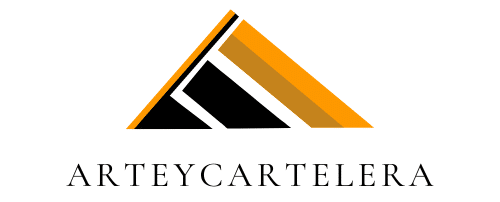What Is the Potential for Virtual Reality Therapy in Treating PTSD?

Post-traumatic stress disorder (PTSD) can be a crippling condition for many. Its invasive symptoms can severely impact the mental health of those affected, making daily life a struggle. There exists a wide variety of treatments for PTSD, but their effectiveness varies from patient to patient. Therefore, new methods are always being developed and tested. One such innovative treatment is Virtual Reality Exposure Therapy (VRET), a cutting-edge method that uses immersive technology to help patients confront and process traumatic memories. In this article, we’ll explore the potential of this therapy in treating PTSD.
What is PTSD and How is it Currently Treated?
PTSD is a mental health disorder that can manifest after a person experiences a traumatic event. Symptoms may include flashbacks, nightmares, anxiety, and uncontrollable thoughts about the event. These intrusive symptoms can affect a person’s daily life, relationships, and overall well-being.
En parallèle : How Can the UK’s Coastal Towns Adapt to Rising Sea Levels and Coastal Erosion?
Traditional therapies for PTSD have primarily focused on cognitive-behavioral techniques, which aim to change the thought patterns that lead to harmful emotions. Other treatments might include medications, talk therapy, and exposure therapy. However, these treatments don’t always provide the desired results, leading to research into alternative treatment forms.
Introduction to Virtual Reality Therapy
Virtual Reality Therapy (VRET) is a form of exposure therapy that uses virtual reality technology to confront fear and anxiety. As a treatment, VRET is relatively new, but it’s showing promising results in various fields of therapy. The technology used in VRET provides an immersive, three-dimensional, computer-generated environment that can simulate real-life situations.
Lire également : How to Develop Effective Communication Campaigns for Recycling Programs in UK Cities?
The immersive nature of VR allows patients to confront anxiety-triggering situations in a safe, controlled environment. It can be tailored to simulate specific scenarios linked to a patient’s trauma, aiding therapists in guiding patients through their traumatic memories.
The Application of VRET in Treating PTSD
When applied to PTSD treatment, VRET has shown promising potential, particularly in helping patients revisit traumatic events safely. The immersive environment offers a realistic yet controllable scenario to face their fears. The therapist can control different aspects of the virtual reality environment, allowing the patient to experience the trauma at their own pace.
Several studies have explored the use of VRET for PTSD. According to a review published on PubMed, VR-based exposure therapy can significantly reduce PTSD symptoms over time. The systematic review and meta-analysis concluded that VRET is a promising tool in treating PTSD, particularly for those who have not responded to traditional therapies.
The Potential Benefits and Limitations of VRET
VRET’s potential benefits are multifold. First, the immersion in a controlled environment can help patients gradually and safely confront their trauma. Second, VR technology allows for a high degree of personalization, enabling the simulation of very specific scenarios that relate to the patient’s trauma.
That said, there are limitations and potential downsides to VRET. The technology can be expensive, and not all healthcare providers have access to it. Additionally, some patients may react negatively to the immersive VR experience, potentially causing distress or even exacerbating symptoms. As with any new therapy, more research is needed to understand its full potential and limitations.
The Future of VRET in Treating PTSD
The use of VRET in the treatment of PTSD is an exciting area of research. As technology continues to advance, so too does the potential for VRET to help those living with PTSD. Ongoing studies are exploring the long-term effects of VRET, and whether it could become a standard treatment for PTSD.
However, as promising as VRET is, it’s not a replacement for traditional therapy methods. It should be viewed as an additional tool in the mental health professional’s arsenal, offering another potential route towards recovery for those living with PTSD. As time and research progress, the hope is that VRET will become an accessible and effective tool in the fight against PTSD.
Remember, if you or someone you know is struggling with PTSD, it’s crucial to seek professional help. VRET is just one of the many treatment options available, and a mental health professional can provide guidance on the best course of action.
Integration of VRET into Existing PTSD Treatment Regimes
Embedding Virtual Reality Exposure Therapy (VRET) into existing treatment regimes for PTSD could potentially enhance the effectiveness of these treatment strategies. The immersive and customizable nature of VR can provide a unique dimension to the treatment process, which could greatly benefit patients struggling with post-traumatic stress.
The integration of VRET with traditional treatments can offer a more comprehensive approach to treating PTSD. For instance, VRET can be used alongside cognitive-behavioral techniques, providing a more interactive and immersive method to identify and change harmful thought patterns. Similarly, VRET can be combined with exposure therapy to incrementally and safely expose patients to their traumatic memories in a controlled virtual environment.
Notably, a systematic review and meta-analysis exploring the effectiveness of combining VRET with traditional treatments found a significant reduction in PTSD symptoms among patients who underwent this combined approach. These findings, available on PubMed and Google Scholar, point towards the potential benefits of integrating VRET into existing PTSD treatment regimes.
However, the integration is not without its challenges. The advanced technology required for VRET can be costly, which may limit its accessibility in some healthcare settings. Moreover, some patients may find the immersive nature of VR overwhelming, potentially leading to distress or a worsening of symptoms. It’s therefore essential that mental health professionals carefully consider a patient’s individual circumstances and readiness for VRET before integrating it into their treatment plan.
Conclusion: The Evolving Landscape of PTSD Treatment
In conclusion, Virtual Reality Exposure Therapy (VRET) holds substantial promise in the treatment of post-traumatic stress disorder (PTSD). The immersive and customizable nature of this technology can enable patients to confront their traumatic memories in a controlled and safe environment, potentially leading to significant reductions in PTSD symptoms.
However, as a relatively new form of therapy, more research is needed to better understand the full potential and limitations of VRET. While some studies suggest that VRET can be effectively integrated into existing PTSD treatment regimes, others highlight the potential for negative reactions to the immersive VR experience. Therefore, mental health professionals should carefully assess a patient’s suitability for VRET and be prepared to tailor the application of this technology to the individual’s needs.
It’s also worth noting that despite the potential of VRET, it is not intended to replace traditional PTSD treatments but rather to supplement them. Integrating VRET with established treatment methods can offer a more comprehensive and potentially more effective approach to treating PTSD. As technology continues to evolve, VRET and other innovative therapies could reshape the landscape of PTSD treatment, providing new hope for those affected by this debilitating condition.
Finally, living with PTSD can be incredibly challenging, so it’s essential to seek professional help. With a range of treatment options available, including VRET, there’s every possibility of finding a path toward recovery. As we continue to explore and innovate, the future of PTSD treatment looks promising.
